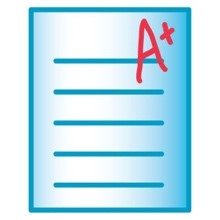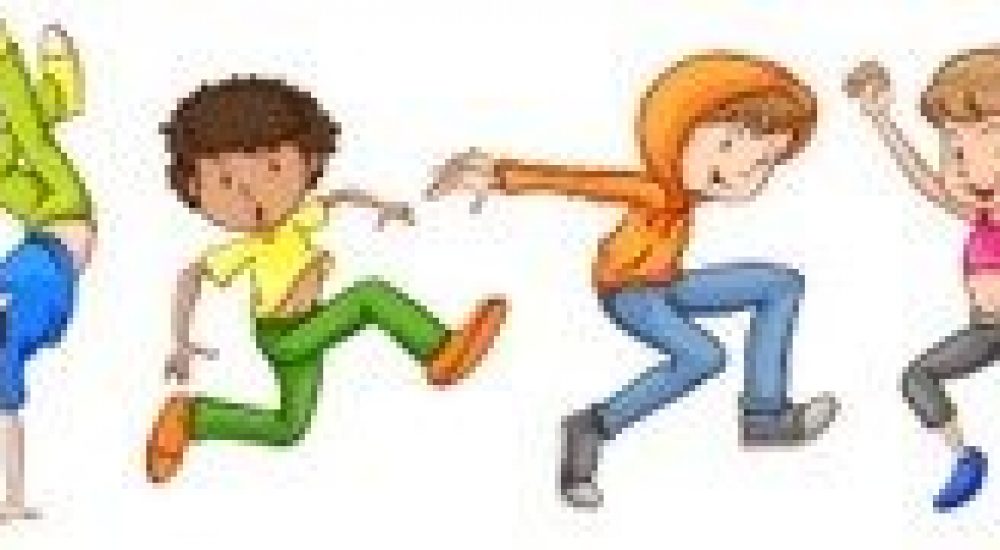In this 3-part series we will explore how more play, creative expression, and movement can lead to more cognitive development. The link from body to brain is powerful, so getting kids to move more and study a little less throughout the day may seem counterintuitive, but it may actually lead to better grades and even improve behavior!
Today in part 1 we’ll showcase some surprising studies and real world examples of how this focus on movement has created dramatic results in learning and behavior.
“Let’s move!”

For the last few years we have been imploring kids to put down the gadgets, get active, move more, and eat less. Rising childhood obesity rates and plummeting youth fitness levels have raised the alarm. The solution seems simple enough.
But there’s a dilemma…
Schools are so focused on standardized testing and academic success that physical education and recess have been put on the back burner.
The irony, however, is that more time spent moving, playing, and exercising has actually been shown to improve attention, behavior, and the ability to learn and retain knowledge – not to mention the side benefit of improved fitness and health!
Finland is a great example of the success of this counter-intuitive strategy. Finland mandates 15 minutes of outdoor play for every 45 minutes of classroom time, with students getting at least 75 minutes of outdoor play per day. Additionally, the amount of academic testing and homework has been greatly reduced.

Many US schools, on the other hand, mandate 100 minutes of physical education… per week! Homework, classroom time, and academic testing have been increased in an effort to help close the achievement gap and make our kids more competitive in the information age.
The result: In 2014 the US ranked 26th out of 34 countries in math, 17th in reading and 21st in science. During this same time period, Finland was ranked #1 in science, and #2 in both Math & reading (Musolf, 2014).
Graham, Holt/Hale, and Parker authors of Children Moving: A Reflective Approach to Teaching Physical Education (2013) discuss numerous studies showing the connection between physical activity and increased academic performance. A few prominent examples include:
- A study on third graders, which concludes that integrating physical activity within the school day led to increases in academic achievement (p. 679).
- A study where after just 20 minutes of moderate treadmill walking versus no exercise for 20 minutes, preadolescents scored a grade level higher in a reading comprehension test (p. 680).
- And finally, a study where children who increased physical activity four-fold with a 14-week physical education program demonstrated improvements in fitness, academic performance, and behavior (p. 680).
A 9-year prospective intervention study from Sweden showed that daily physical education in school improved both motor skills and school academic performance (Ericsson & Karlsson, 2012). This longitudinal study compared two groups of children from the time they were 7 years old until 16 years old when they left compulsory school.
The control group of 91 students engaged in the normal amount of physical education in school, which was comparable to U.S. standards, of 2 days per week for 45 minutes per session. The intervention group of 129 students participated in PE class 5 days per week for 45 minutes per session, and for those students with motor skill deficits one hour per week of adapted motor skill training was added. The students were all assessed based on a validated motor skills test as well as on their grades in Swedish, English, math, PE, and the proportion of students who qualified for upper secondary school.
At the end of 9 years there were no motor skill deficits in 93% of students in the intervention group compared to 53% in the control group! The average acceptance rate for Swedish students to secondary schools is 88% and decreasing each year. The control group achieved a similar rate of acceptance at 89%. The intervention group, however, had a 96% rate of acceptance, despite the fact that the control group had better reading ability scores at the start of the study.

In part 2 we will explore the mechanisms behind the power of movement to improve the brain. Look out for part 2 on April 4th!
For Breakfast I cooked for my wife and very hungry 3 year old, we have 2 eggs over medium with salt, pepper, and turmeric, sweet potato hash, 1 slice of bacon, sautéed baby kale, chard, and spinach, sautéed cherry tomatoes & fresh avocado – all drizzled with olive oil. Coffee is mandatory, though not for my son, and we all look forward to our spoon of cod liver oil to finish off our breakfast of champions.
References
Ericsson, I., & Karlsson, M. K. (2012). Motor skills and school performance in children with daily physical education in school – a 9-year intervention study. Scand J Med Sci Sports, 24(2), 273-278. doi:10.1111/j.1600-0838.2012.01458.x
Gallahue, D., & Cleland Donnelly, F. (2003). Developmental Physical education for all children (Fourth ed.). Champaign, Illinois: Human Kinetics.
Graham, G., Holt/Hale, S. A., & Parker, M. (2013). Children moving: A reflective approach to teaching physical education (9th ed.). New York, NY: McGraw-Hill.
Musolf, D. (2014, February 19). Does outdoor play make kids smarter? – San Jose Mercury News. Retrieved from https://www.mercurynews.com/bay-area-living/ci_25181071/does-outdoor-play-make-kids-smarter?source=infinite-up
Ratey, J., & Hagerman, E. (2008). Spark: The Revolutionary New Science of Exercise and the Brain (First ed.). New York, New York: Little, Brown and Company, Hachette Book Group.
Rosenbaum, D. A., Carlson, R. A., & Gilmore, R. O. (2001). Acquisition of intellectual and perceptual-motor skills. Annual Review of Psychology, 52(1), 453-470. doi:10.1146/annurev.psych.52.1.453
Schwartz, T., Gomes, J., & McCarthy, C. (2010). The way we’re working isn’t working: The four forgotten needs that energize great performance. New York, NY: Free Press.

Pingback: PLAY. Because Learning Should Be Fun! - BOOST Cafe